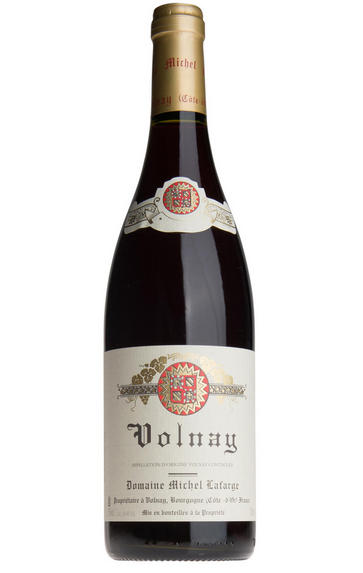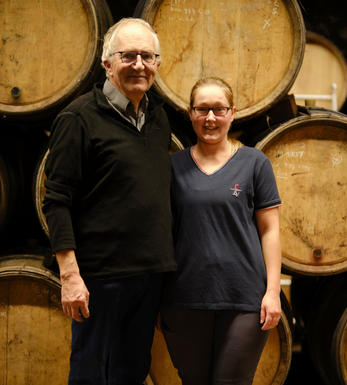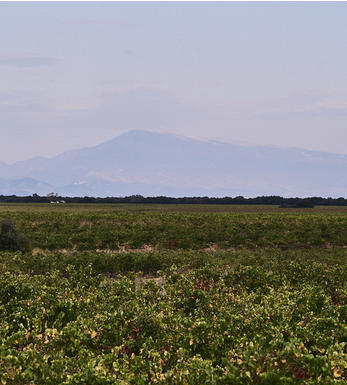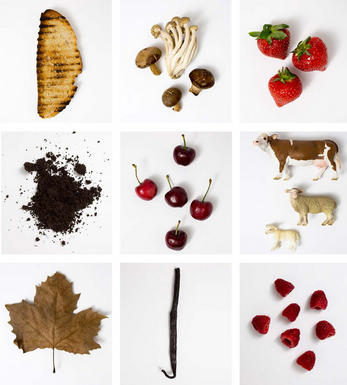
2012 Volnay, Domaine Michel Lafarge, Burgundy

Critics reviews
This is notably more elegant with its pretty and attractively layered mix of red and blue pinot fruit scents that display added breadth in the form of earth and soft spice nuances. There is a lovely sense of vibrancy to the utterly delicious and lightly mineral-infused medium-weight flavours that also display a touch of finishing dryness.
Drink from 2018 onward
Allen Meadows, Burghound.com (April 2014)
The 2012 Volnay is another gorgeous, deeply expressive wine. Layers of sweet, perfumed fruit blossom in an impeccable, totally harmonious wine that over-delivers. The fruit is quite open and generous, yet the 2012 has more than enough classicism in its structure to drink well for several years. The floral, lifted finish is hugely appealing.
This is a gorgeous set of 2012s from Michel and Chantal Lafarge. Tasting the wines from barrel at Lafarge usually involves a bit of back and forth between the several mould-covered cellars. Not in 2012. Yields are down a heartbreaking 80%. Some wines weren't made at all, such as the Pommard Pezerolles, which went into the Bourgogne, and the Beaune Aigrots and Greves, which were bottled together as a straight 1er Cru. The wines themselves are gorgeous. What amazes me most is how, even with the tiny yields, the 2012s remain faithful to the house style, something that is not the case at all domaines in the Côte de Beaune. Readers who can find these gorgeous wines should not hesitate. Second chances aren't likely to come around with the 2012s.
Drink 2015 - 2027
Antonio Galloni, Vinous.com (January 2014)
Just one cuve and no Volnay Vendanges Selectionnées in 2012. Pale ruby. Quite substantial and earthy with mushroom notes and real earthiness. This is sort of the Figeac (traditional version) of Volnay!
Jancis Robinson MW, JancisRobinson.com (January 2014)
The 2012 Volnay Village comes from 11 parcels scattered around the appellation. There is usually two cuvees but this year there is only one. It has a tight, mineral bouquet that will need several months after bottling to really unwind. The palate is smooth and harmonious; the acidity well-judged with lovely ripe red cherry and strawberry notes furnishing the neat and tidy finish. Conservative but in a positive sense.
Neal Martin, Wine Advocate (December 2013)
About this WINE

Domaine Michel Lafarge
Following the sad passing of Michel in January 2020, his son Frédéric and granddaughter Clothilde maintain his legacy – producing some of the greatest wines in Volnay.
There’s nothing modern in the winemaking at Domaine Michel Lafarge, though the meticulous care for their biodynamically farmed vineyards puts them at the forefront of viticultural practices.
In the vineyard
Vineyard work is usually assisted by the estate’s hens, who eat up any lurking pests. In ’14, Frédéric and Chantal (maiden name Vial) Lafarge decided to buy some Beaujolais vineyards, starting in Fleurie before expanding into Chiroubles and the Côte de Brouilly. The vineyards had all previously been run organically, and that continues under the Lafarge-Vial stewardship – along with biodynamic treatments.
In the winery
The grapes are destemmed and vinified traditionally; very little new oak is used in the cellar.

Volnay
The finest and most elegant red wines of the Côte de Beaune are grown in Volnay, a village which might be twinned with Chambolle- Musigny in the Côte de Nuits, for the high active chalk content in the soil and comparatively low clay content.
Whereas in earlier times Volnay was made in a particularly light, early drinking style, these days there are many producers making wines which age extremely well. The best vineyards run either side of the RN73 trunk road.- 98 hectares of village Volnay
- 115 hectares of Premier Cru vineyards (35 in all). The finest include Les Taillepieds, Clos des Chênes, Champans, Caillerets (including Clos des 60 Ouvrées) and Santenots in Meursault.
- Recommended producers: Lafarge, Lafon, de Montille

Pinot Noir
Pinot Noir is probably the most frustrating, and at times infuriating, wine grape in the world. However when it is successful, it can produce some of the most sublime wines known to man. This thin-skinned grape which grows in small, tight bunches performs well on well-drained, deepish limestone based subsoils as are found on Burgundy's Côte d'Or.
Pinot Noir is more susceptible than other varieties to over cropping - concentration and varietal character disappear rapidly if yields are excessive and yields as little as 25hl/ha are the norm for some climats of the Côte d`Or.
Because of the thinness of the skins, Pinot Noir wines are lighter in colour, body and tannins. However the best wines have grip, complexity and an intensity of fruit seldom found in wine from other grapes. Young Pinot Noir can smell almost sweet, redolent with freshly crushed raspberries, cherries and redcurrants. When mature, the best wines develop a sensuous, silky mouth feel with the fruit flavours deepening and gamey "sous-bois" nuances emerging.
The best examples are still found in Burgundy, although Pinot Noir`s key role in Champagne should not be forgotten. It is grown throughout the world with notable success in the Carneros and Russian River Valley districts of California, and the Martinborough and Central Otago regions of New Zealand.


Buying options
Add to wishlist
Description
All the village Volnay vineyards are in this one cuvée. Lovely bright purple. Tight and concentrated, quite firm on the palate, good acidity, still very backward. Impressive length, this will certainly come round. Lafarge wines always need time!
After the hail the Lafarges made scarcely 10 hl/ha in 2012, and it wasn’t possible to make some of their wines at all this year. We expect to put the Premiers Crus into a mixed case and there is no Volnay Vendanges Selectionées this year. We know a vigneron is honest when he makes his generic wines such as Passetoutgrains and Bourgogne Rouge in such a year, but cannot offer some of the grander stuff! They are somewhat happier with 2013, though Michel, who is 85 at the time, says he has never known two such short vintages.
Berry Bros. & Rudd
wine at a glance
Delivery and quality guarantee